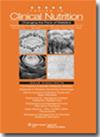营养与饮食学系本科生的食物瘾与超加工食品的食用量
IF 0.4
4区 医学
Q4 NUTRITION & DIETETICS
引用次数: 0
摘要
本研究旨在根据学年确定营养与饮食学系本科生的食物成瘾和超加工食品消费情况。共有 238 名学生参与了这项横断面研究。研究评估了学生食用超加工食品的频率,并采用了耶鲁大学食物成瘾量表。食物成瘾的总体患病率为 10.5%。四年级学生食物成瘾的平均症状数低于一年级和二年级(P = .002)。加工肉类(r = -0.441,P < .001)和甜甜圈(r = -0.309,P < .001)的食用频率与学年的增加呈中度负线性关系。本文章由计算机程序翻译,如有差异,请以英文原文为准。
Food Addiction and Consumption of Ultraprocessed Foods Among Undergraduate Nutrition and Dietetics Students
The aim of this study was to determine food addiction and consumption of ultraprocessed foods among undergraduate nutrition and dietetics students according to academic year. A total of 238 students participated in this cross-sectional study. The ultraprocessed food consumption frequency was assessed and the Yale Food Addiction Scale was applied. The overall prevalence of food addiction was 10.5%. The mean symptom count for food addiction was lower in the fourth year than in the first and second years (P = .002). The frequency of processed meat (r = −0.441, P < .001) and donut consumption (r = −0.309, P < .001) showed a moderate negative linear relationship with the increase in academic years.
求助全文
通过发布文献求助,成功后即可免费获取论文全文。
去求助
来源期刊

Topics in Clinical Nutrition
NUTRITION & DIETETICS-
CiteScore
0.90
自引率
20.00%
发文量
34
期刊介绍:
Topics in Clinical Nutrition (TICN) is a peer-reviewed, quarterly journal designed as a resource for the continuing education and clinical practice of dietitians and nutritionists. Each issue addresses topics of interest primarily to dietitians and nutritionists, students and interns in professional training programs and other health care personnel involved in the nutritional care of patients. Articles include translational research reports (work that applies new knowledge to practical effect), practice projects, evidence-based literature reviews, case studies and book reviews, and articles that highlight education theory and applied research which share the tools and techniques of nutrition and dietetics education.
 求助内容:
求助内容: 应助结果提醒方式:
应助结果提醒方式:


